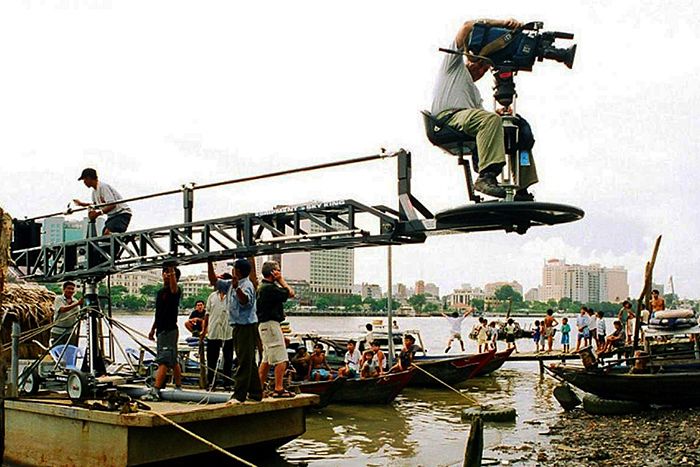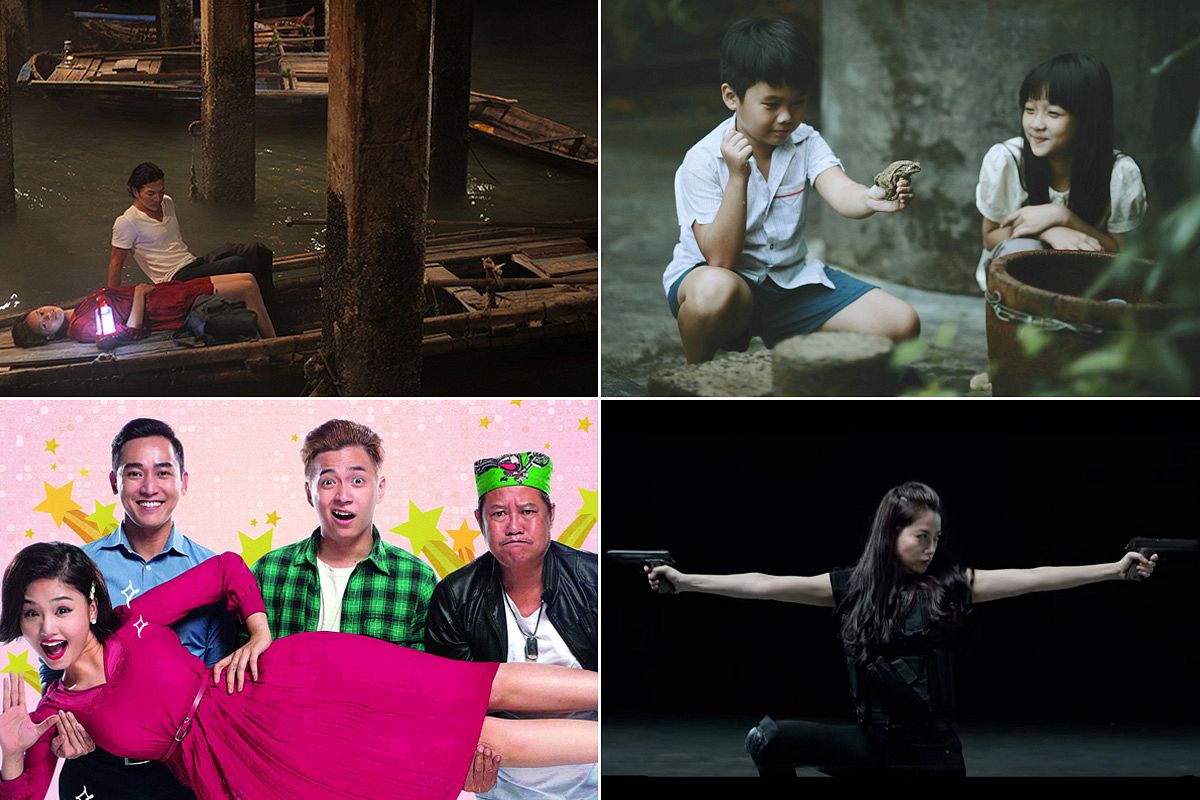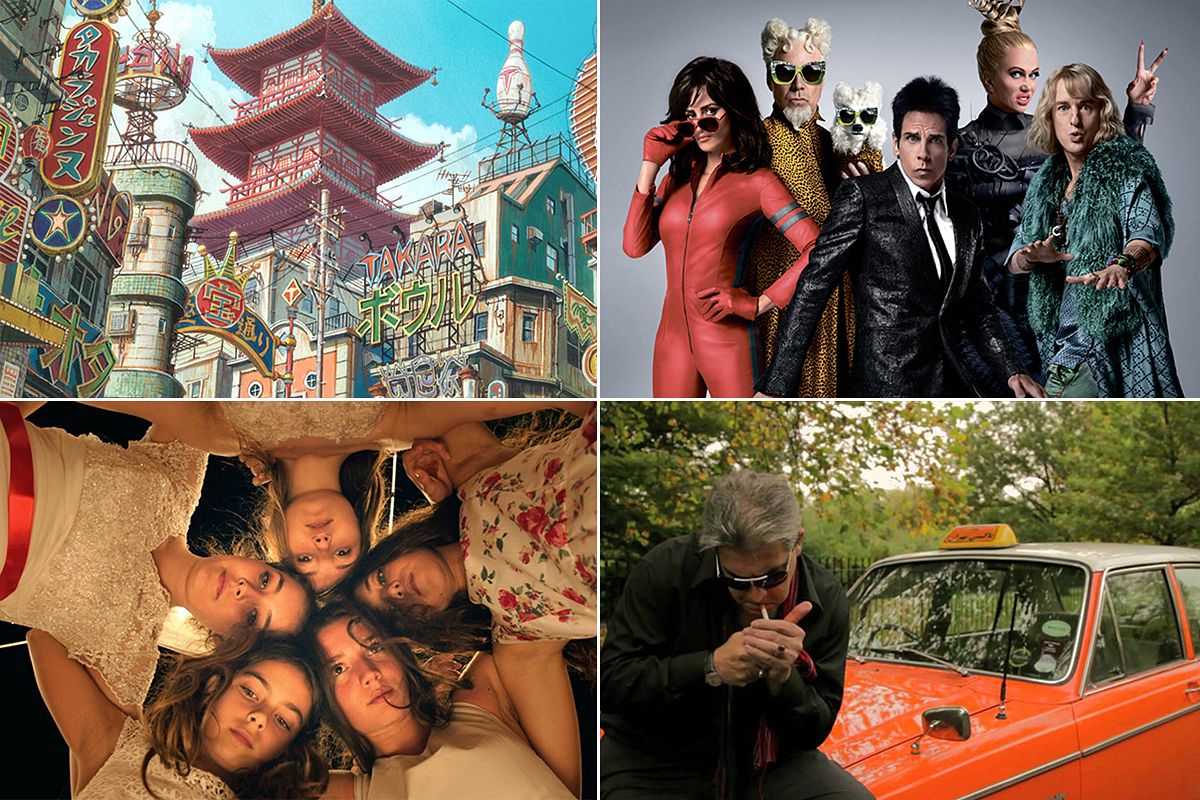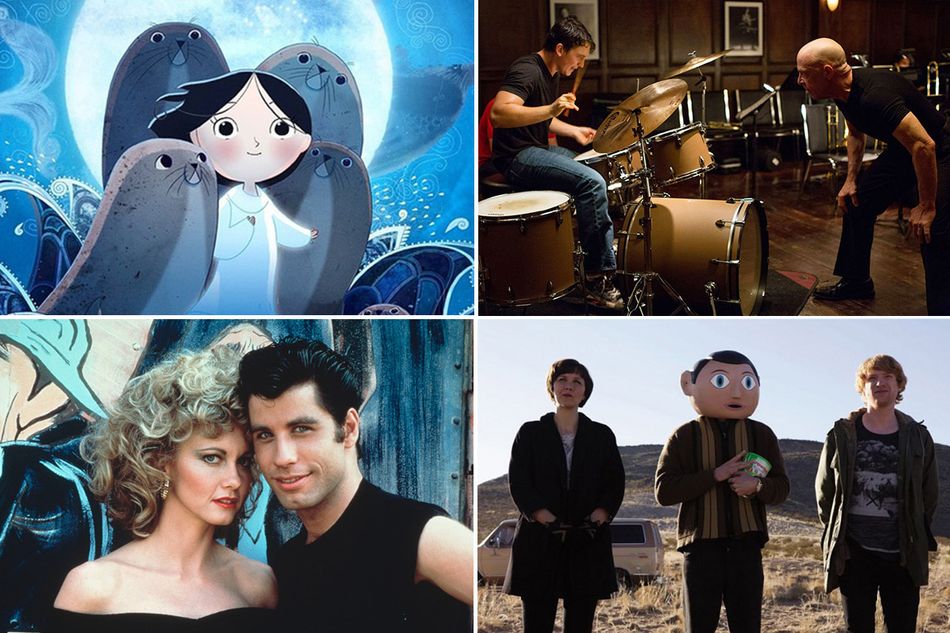Life Itself, a film about the life of the late film critic Roger Ebert opens with one of his quotes: “We are born with a certain package. We are who we are [...], we are kind of stuck inside that person...For me, the movies are like a machine that generates empathy. It lets you understand a little bit more about different hopes, aspirations, dreams and fears. It helps us identify with the people who are sharing this journey with us.”
In reconsidering all the films released last year, I am overwhelmed not only by their excellence but most importantly by their variety, their breadth of emotions, technical achievements and storytelling. Choosing 20 titles was not easy, especially when I think about all the other great films that did not make the cut. Saigoneer will also run a readers' choice list of this year's best films next week. Let us know what your favorite films from the Year of the Goat were by filling out this survey.
1) Inside Out (USA)
The brain is one of the most mysterious parts of the human body, so the fact that an animation made it accessible to children, engaged adults, wowed critics and made millions of dollars on the way is an achievement on its own. Pixar consulted renowned psychologists Paul Ekman and Dacher Keltner to take us on a funny, endearing, inventive and comprehensive adventure inside the brain of an 11-year-old girl, Riley, during an unsettling time in her life. Here, five emotions – Joy, Sadness, Fear, Disgust and Anger – show us how her memories are formed and stored but, most importantly, how they shape who she is and how her recollections change as she grows up. Joy might seem like the hero of the story, always trying to keep Riley happy, but it is Sadness who is the true star of the show. Unlike many of Pixar's other unrealistic cartoons, Inside Out also embraces the negative emotions of human beings, which are an essential component – and often a helpful one – of what makes us who we are. What a wonderful, intelligent film for everyone. Bravo, Pixar! Bravo!
2) 45 Years (UK)
After Haneke’s Amour, Andrew Haigh proves again that elderly people can be at the center of a romantic drama. Charlotte Rampling and Tom Courtenay electrify the screen by seemingly not doing much in the roles of a wife and husband preparing for their 45thwedding anniversary. Their relationship, which appears to still be quiet ordinary and yet fueled by love, starts to crumble when a letter about the husband's old girlfriend arrives at their peaceful cottage. Haigh’s script places us in front of a burning house whose most destructive flames are hidden deep inside, as Rampling’s character slowly discovers how little she knows the man with whom she has spent almost half a century. Her realization will not come until the last shot of the film in a scene that is extremely subtle but nonetheless excruciatingly poignant.
3) Mommy (Canada)
Undoubtedly the most accomplished film so far by Canadian enfant terribleXavier Dolan, Mommyexudes its filmmaker's anarchism, anger and desire to destroy the schemes of cinema as well as life. Unabashedly over-emotional and trashy, the film dives into the story of a mother (Anne Dorval) trying to cope with her violent son (Antoine-Olivier Pilon) who suffers from ADHD, until she commits what is considered the ultimate maternal sin. The vortex of this dysfunctional family is filmed in portrait orientation (the same way in which you would film an iPhone video), going back to the traditional widescreen only during the story's brief moments of happiness. Praise needs to be given to Dorval and Pilon, who hold back nothing in their wild but honest performances. Mommyis a high-speed roller coaster that straps us in and takes us to places we did not know existed, making us feel emotions we did not even know we had or wanted to feel.
4) The Look of Silence (Denmark/Indonesia/Norway/Finland/UK)
Following The Act of Killing, The Look of Silenceis Joshua Oppenheimer’s second documentary about the Indonesian massacres that followed the 1965 coup d'etat in which a genocide was carried out against Communists and Chinese ethnic groups. This time, the American documentarian follows Adi Rukun, brother of murdered Ramli Rukun, as he confronts the people who carried out the killings. Watching the unrepentant killers retell and explain, with smirks on their faces, how they killed millions of people sends shivers down your spine. Their behavior is so inhuman that, like Adi, we start hoping that this might be their way of cathartically coping with the horrendous acts they have committed. Much like The Act of Killing, Oppenheimer does not filter the story or intervene, except to ask a couple of questions, as he knows what is unfolding in front of his camera is so powerful that it does not need any explanation.
5) Bridge of Spies (USA)
An instant American classic, Bridge of Spiesis another clever attempt by tireless Steven Spielberg to convey criticism about contemporary American politics by revisiting heroic acts from the past. Spielberg must have been born with a movie camera in his hand: his ability to unfold the intricate, true events surrounding spy swaps between the United States, East Germany and the Soviet Union during the Cold War seems effortless. Lawyer James B. Donovan (Tom Hanks) is put in charge of defending and then trading (for an American spy-pilot) Soviet spy Rudolf Abel (Mark Rylance) during the hysteria of the Cold War. In the same vein as Saving Private Ryan, Schindler’s List and Lincoln, Spielberg praises the little men who made history, not the countries they represent, and asks us to remember what these individuals stood for in contrast to what we are doing now.
6) Salt of the Earth (France/Italy)
Two great contemporary artists converse through their artistic media: this is Salt of the Earth, a documentary about acclaimed Brazilian photographer Sebastião Salgado. Filmmaker Wim Wenders is invisible behind the camera as he follows Salgado on photographic expeditions in the wild and back to his hometown in Brazil. Throughout their journeys, Salgado recounts though his photo essays the stories of his childhood, his private life, how he gradually became an influential socio-documentary photographer and how, ultimately, the wars and social tragedies he covered had a toll on his spirit. Salgado’s mesmerizing black-and-white photographs are a feast for the eyes on their own, but Wender’s ability to allow his fellow artist to tell his own story at his pace is what makes Salt of the Earthan honest portrait.
7) The Assassin (Taiwan)
“I am not shooting a film to please an audience...I don’t even make films to communicate with an audience. I am the only person who I am speaking to,” said Taiwanese master Hou Hsiao-hsien in a recent interview. It is not hard to believe this statement while watching The Assassin. In so many ways, the execution of the film breaks the mold of many other contemporary and globally famous wuxiafilms (Crouching Tiger Hidden Dragon, The House of Flying Daggers, Heroand Ashes of Time), so much so that while I was watching it, I felt it was the first time I had ever seen a wuxia in my life. The revenge plot and the martial arts sequences become almost secondary in a story that focuses on the poetic and meditative world and power dynamic of a revenge killer during the Tang Dynasty. Many not familiar with the genre and Hou’s cinematic sensitivity will find The Assassinhard to follow, but it carries a unique beauty and style which makes it the most visually striking film of the year.
8) The Revenant (USA)
Emmanuel Lubezki should have got first billing in this film. Not to take anything away from Alejandro González Iñárritu’s direction or Leonardo DiCaprio’s muscular and almost-silent performance, but it is hard to believe that The Revenantwould have worked without the visual bravura of its cinematographer. A revenge-survival story inspired by the true adventures of frontiersman Hugh Glass, The Revenantrelies on recreating the ominous and stark beauty of the relationship between man and nature, and it does so by slowly transporting the audience to a time long past. It is a journey back through hell to a primitive human state in which the overwhelming isolation of mankind seeps through the long panoramic shots and Glass’s frightening survival attempts.
9) Listen to Me Marlon (UK)
Like many, I thought I knew (almost) everything about the legendary American actor Marlon Brando. It turns out I was wrong. Never-heard-before self-hypnosis tapes and recordings by the late Brando are interwoven with film stills, interviews and news reels to recompose the life of one of cinema’s most reserved and influential people through his own words. From A Streetcar Named Desireand his training at the Actors Studio to his political activism and his family’s tragedies, Listen to Me Marlonhas an extraterrestrial quality to it, not only because it feels like the dead has come back to us but also for its emotional impact on the audience, who will be surprised at how the life of a person we believed we knew can be so revelatory and heartbreaking.
10) Victoria (Germany)
Sebastian Schipper’s heist thriller is a one-shot wonder that grips viewers from the first frame and keeps them captive until the end. When I watched it for the second time with some friends, within minutes – before anything had really happened – they were asking me what terrible things awaited the main protagonist. Oh, the suggestive power of film! Victoria is a cinematic gem on so many levels: the technical difficulties of being filmed on a steady cam, long takes that go through 20 different locations and its apparent simplicity, which dazzles and immerses the audience, and the unrestrained performance of its leading lady (Laia Costa). The film goes to show that, as long as the cast, cinematographer and filmmaker are operating at the top of their collective game as a creative team, you do not need big budgets or convoluted action sequences to create an excellent thriller.
11) The Big Short (USA)
12) A Girl Walks Home Alone at Night (USA)
13) Anomalisa (USA)
14) The Duke of Burgundy (UK)
15) Amy (UK)
16) Force Majeure (Sweden/France/Denmark/Norway)
17) White God (Hungary/Germany/Sweden)
18) The Dance of Reality (Chile/France)
19) Timbuktu (Mauritania/France)
20) Mad Max: Fury Road (USA)














